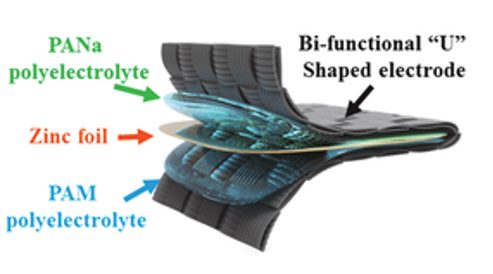The momentary lull is swept away, as the opening chords of ‘Crazy in Love’ electrify the first few rows. Bey’s controlled strut throws the flailing limbs below her into stark relief. And it happens… she meets your eye, every stride bringing her one step closer. As she reaches the edge of the stage she bends down and poses. You reach for your phone, only to be greeted by a blank screen.
There are many ways to increase battery life, but they all depend on access to some external resource, such as solar power. If that resource is inaccessible, then the technology becomes redundant. Recent work by a Chinese team seeks to bypass this problem by utilizing a resource that is ever present—the air.

The battery design.
The new technology consists of a U-shaped electrode (see above) that contains both a normal battery, and an energy storage system that uses oxygen to charge. Under normal circumstances, the energy storage system is sealed, and the device works like a normal battery. Unsealing this compartment allows the storage system to charge, extending battery life. When both systems are depleted, they can be regenerated using an external electric current.
The team performed a suite of experiments on their device. They showed that the energy storage system could be almost 90% charged in 10 minutes, and that this process could be repeated 60 times without damaging performance. The device was then tested for use with a digital hygrometer. The series of images below show the battery powering the device in normal mode. After several hours the battery is exhausted, but after recharging in air, the battery is able to prolong the life of the hygrometer.
While Beyonce fans will not be able to use this technology immediately, the team expects their device to soon find application in the next generation of portable consumer electronics.

The device at work.

















